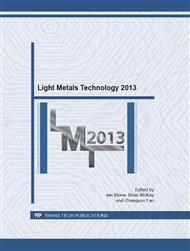p.373
p.378
p.383
p.388
p.393
p.398
p.403
p.408
p.413
Novel Forming of Ti-6Al-4V by Laser Engineered Net Shaping
Abstract:
Titanium alloys offer important weight and performance advantages, but are relatively expensive. Traditional “subtractive” manufacturing causes up to 95% material waste, which makes the manufacturing of titanium components even more expensive. Laser Engineered Net Shaping (LENS) is an effective method of “additively” making components layer-wise, directly from unit materials, based on 3D digital models. Parts fabricated by LENS are net/near-net shape, and therefore, this process minimizes, or even eliminates massive machining costs and material waste. In this study, as-fabricated LENS Ti-6Al-4V test specimens were investigated. The resulting microstructures were extensively characterized and correlated to processing parameters. In addition, room temperature tensile tests were conducted to obtain static mechanical properties and to understand the behaviour at LENS deposition-substrate interface. These results will be presented and discussed.
Info:
Periodical:
Pages:
393-397
Citation:
Online since:
July 2013
Authors:
Price:
Сopyright:
© 2013 Trans Tech Publications Ltd. All Rights Reserved
Share:
Citation:


